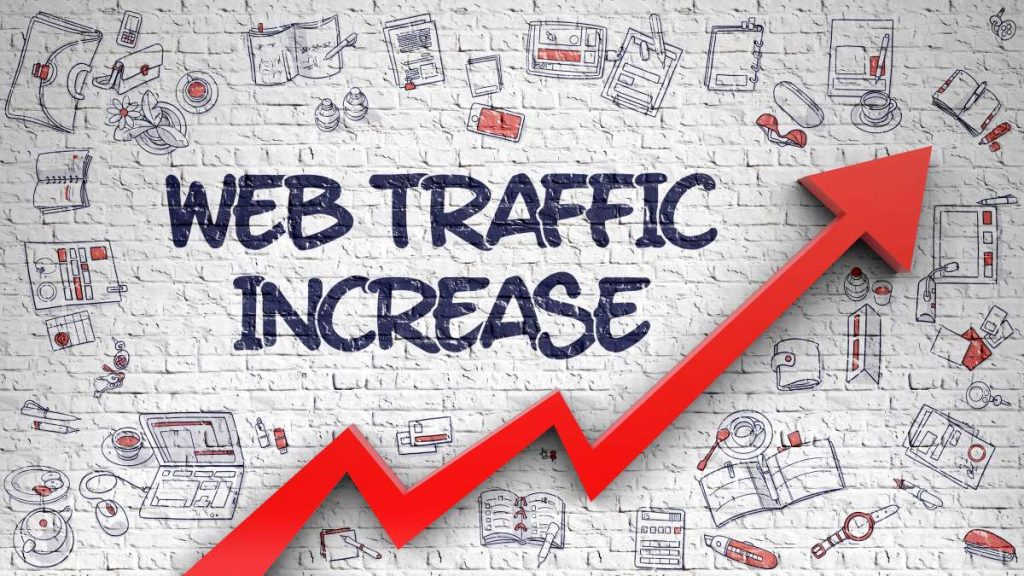Website traffic analysis is a fundamental element of any digital marketing strategy. Understanding your website visitors enables you to improve the user experience and boost conversions.
By tracking metrics like bounce rates, you can assess the level of engagement of your visitors and identify areas for improvement. This data empowers you to make informed decisions about content optimization and marketing strategies.
Analyzing Your Traffic Sources
One of the most important things that you can do when it comes to website traffic analysis is identifying your sources. This allows you to make data-driven decisions that can help you optimize your site for increased user engagement and conversion rates.
For example, if your landing pages have a high bounce rate, it may indicate that your content is not engaging enough or that your visitors are finding what they’re looking for elsewhere on your site. This can be corrected by adjusting your content strategy to ensure that your visitors are having a positive experience on your website.
Another important factor that you should take into consideration when analyzing your website is tracking and assessing user behavior. This can be done by monitoring metrics like the average time on site, which helps you identify pages that are capturing attention and encouraging users to spend more time on your site. It can also be useful to track exit rates, which gives you insight into how effective your call-to-action buttons and forms are.
This site metric can be tracked by using tools such as Google Analytics 4 and Leadfeeder. It tells you which pages and sources are driving the most traffic to your website, helping you to identify opportunities for improving your marketing strategy. It’s also helpful to compare your results with those of your competitors, which can give you a better idea of what is working and what is not.
Identifying High-Performing Pages
When looking at traffic data, it is important to know which pages are performing well. Identifying high-performing pages on a website helps with content optimization, which in turn drives more traffic and conversions. These high-performing pages may have compelling headlines, clear call-to-action buttons, or relevant and engaging content. The goal is to replicate these elements across the site, so users continue to find value and stay onsite longer.
By Checking website traffic data, it is also possible to identify potential areas for improvement. For example, a high bounce rate can indicate that visitors aren’t finding what they need on the page and are quickly leaving without engagement. This metric is important to monitor because it can indicate a lack of relevance or a user experience problem, which needs to be addressed in order to increase conversions.
Another valuable aspect of analyzing web traffic is knowing which types of visitors are visiting your website. There are many different types of traffic, including organic search traffic, referral traffic, and traffic from online ad campaigns. This information is important to know because it allows you to better optimize your content strategy and marketing campaigns for optimal results.
Comparing your website’s traffic to industry benchmarks is also a great way to assess your performance. This will help you determine if you are meeting your goals and achieving success.
Increasing Conversion Rates
Website traffic analysis provides valuable insights into user behavior that can be used to improve the website and increase conversion rates. Various metrics can be analyzed, including average time on site, which is a good indicator of how well a page is engaging visitors and how much interest it has generated.
Bounce rate and exit rate are other important metrics to keep track of. These metrics keep tabs on instances when a visitor views any page on your site and then leaves without requesting any other information or interacting in any meaningful way. The lower your bounce and exit rates, the better.
The best website traffic analysis techniques include setting specific objectives for what you want to achieve from your data. For example, instead of reporting that you have 1 million unique pageviews, which is up from last month, focus on how much this is helping you meet your business goals such as increasing your lead generation or reducing your website’s bounce rate.
Measuring and analyzing your website’s performance regularly is crucial to understanding your audience’s needs and identifying areas for improvement. With the right tools and a strong understanding of the importance of website traffic analytics, you can use this data to optimize your content and enhance the user experience for your visitors. This will increase engagement and ultimately boost your bottom line.
Identifying Areas for Improvement
Website traffic analysis helps businesses identify potential website hiccups and areas for improvement. For example, if visitors are bouncing quickly from your home page, it might be a sign that they don’t find what they are looking for quickly or easily on the site. In this case, you may need to make some changes to your site navigation or content to improve the user experience and boost conversions.
Tracking average time on site also provides valuable insights into how engaged visitors are with your site. A higher average time on site is a positive indicator that your content is engaging and relevant to the needs of your audience.
In addition, analyzing your conversion funnel can help you identify the stages in the sales process that need improvement. For example, if you are losing visitors at the signup stage, you might want to consider adding a call-to-action button or form submission to your landing page.
Regularly tracking and analyzing your website data can help you gain a competitive edge and achieve your marketing goals. Start by selecting a reliable analytics tool that aligns with your business objectives and then install and configure the software according to your website’s needs. Then, use it to identify the key performance indicators that are most important for your goals and regularly monitor and analyze those metrics to make data-driven decisions.






